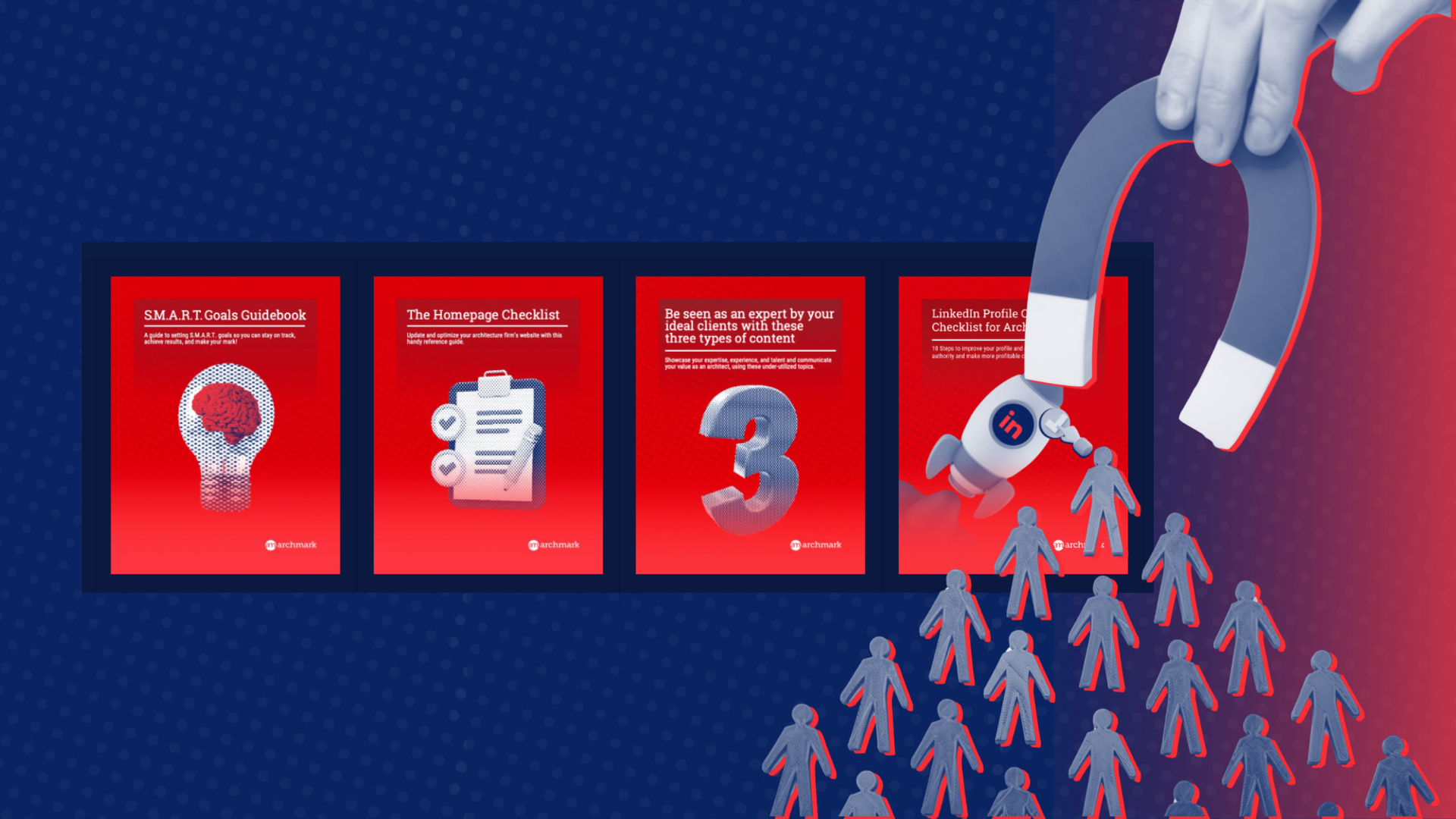Architects: Learn to Communicate Your Value & Raise Fees
72% of People Don’t Know What Architects Do — Here’s How to Communicate Your Value
Here’s a stat that should make every architect sit up straight:
72% of people have no idea what architects actually do.
Not just a little confusion — a fundamental lack of understanding about your role, responsibilities, and impact.
This isn’t just a PR problem. It’s a fee problem. A respect problem. A positioning problem.
If you want to stop competing on price and start commanding the fees you deserve, you have to communicate your value more effectively — and more often.

The Problem Hiding in Plain Sight
When potential clients don't understand what you actually do, they can't value what you provide.
And when they can't value what you provide, they default to the only metric they do understand: Price.
You've felt this, haven't you?
The client who thinks your design fee should be a tiny percentage of the total project cost because "all the real money goes to construction."
The developer who wants to cut your involvement after schematic design because they assume anyone can handle the "paperwork part."
The homeowner who thinks they can take your design to any contractor and get the same result without your continued involvement.
These aren't isolated incidents. These are symptoms of a profession-wide communication crisis that's been decades in the making.
And before you say "Well, the AIA should fix this," let's talk about why that's both unrealistic and strategically wrong.
Why the AIA Can't Save You (And Shouldn't Have To)

The Comparison That Should Scare You
Let's look at how other professions handle this knowledge gap – because spoiler alert, they handle it much better than architects do.
Lawyers: When someone hires an attorney, they generally understand that legal work is complex, requires specialized training, and involves significant liability. They might not understand exactly what goes into contract negotiation or litigation strategy, but they respect the expertise enough to pay for it without micromanaging every billable hour.
Doctors: Patients might Google their symptoms, but they generally don't tell their surgeon how to operate or demand itemized explanations of every medical decision. The respect for expertise translates directly into fee acceptance.
Engineers: While the public might not understand the complexities of structural calculations, they generally accept that you need an engineer to ensure a bridge won't collapse. The perceived necessity translates to less fee pressure.
Architects: The public thinks you draw pretty pictures and someone else handles the "real work." The perceived value is decorative, it’s a luxury, not an essential.
See the problem?
How This Kills Your Fees (In Very Specific Ways)
- Scope Creep Becomes Scope Avalanche When clients don't understand what's included in design services, they expect everything. "Wait, coordinating with the mechanical engineer costs extra? But isn't that just part of design?"
- Fee Compression Through False Comparisons Clients compare your fees to their cousin who "designed" their kitchen remodel in SketchUp. When they don't understand the difference between design and comprehensive architectural services, all fees seem inflated.
- Premature Disengagement "We'll just take it from here after design development." Because surely construction administration is just babysitting, right? (You know what happens next – change orders, design deviations, and a project that bears little resemblance to the original vision.)
- Commodity Positioning When clients can't differentiate between what you do and what they think everyone else does, you get lumped into commodity pricing. "All architects basically do the same thing, so why shouldn't I just hire the cheapest one?"
- Devaluation of Expertise Without understanding the complexity of what you do, clients feel entitled to override your professional judgment. "Can't we just move that wall? It doesn't look structural."
The Communication Crisis Most Architects Don't Recognize
What the 72% Actually Don't Know (And Why It Matters)
- They don't know you manage the entire project delivery process. They think you hand off drawings and disappear. When they discover you're actually coordinating consultants, reviewing shop drawings, and overseeing construction quality, it feels like scope creep rather than standard service.
- They don't know you're legally responsible for life safety. They see pretty pictures, not someone who is responsible for designing a safe building that won't kill anyone. This is why they balk at your professional liability insurance costs and conservative design decisions.
- They don't know you navigate regulatory complexity. Getting permits seems like paperwork anyone can do, not navigating a complex web of codes, zoning requirements, and approval processes that could make or break their project.
- They don't know you protect their investment. They see design fees as an expense, not as a smart investment against costly mistakes, time-consuming change orders, and construction problems that could cost ten times your fee.
- They don't know you translate their dreams into buildable reality. They think design happens in a vacuum, not through hundreds of technical decisions that balance aesthetics, budget, schedule, and performance.
The Architecture Firms That Figured It Out
- They lead every conversation with outcomes, not process. Instead of "We'll develop schematic designs based on your programming requirements," they say "We'll design a space that helps your business run more smoothly and makes your customers want to stay longer."
- They educate continuously, not defensively. Rather than explaining their value only when clients question fees, they weave value education into every interaction. Websites, proposals, presentations, progress reports – everything reinforces why their expertise matters.
- They position expertise as protection, not luxury. Instead of selling design services, they sell risk mitigation. "Here's what happens to projects when they don't have proper architectural oversight," hits differently than, "Here's why good design matters."
- They create case studies that highlight invisible value. "This project came in 15% under budget because we caught mechanical conflicts in CD review," is more powerful than, "We won an AIA award for this design."
The Three-Part Education System That Actually Works
Stop Waiting for Permission to Charge What You're Worth
The brutal reality is that most architects are providing far more value than they're capturing.
You're solving complex problems, managing significant risks, and delivering outcomes that impact your clients' lives and businesses in profound ways.
But if you keep hiding that value behind industry jargon and expecting clients to magically understand what you do, you'll keep competing on price instead of value.
The firms winning right now aren't waiting for the profession to fix this problem.
They're fixing it themselves, one client conversation at a time.
They're not hoping the AIA will run a campaign that makes everyone respect architects. They're creating their own campaigns that make their specific clients respect them.
They're not frustrated that the public doesn't understand architecture.
They're focused on helping their clients understand their architecture.

If You Don’t Communicate Your Value, Don’t Expect Clients to Pay for It
You have two choices:
You can keep operating in a market where 72% of people don't understand what you do, competing primarily on price and hoping clients will magically appreciate your expertise.
Or, you can take control of the narrative.
You can become the firm that educates clients about architectural value before, during, and after every project. You can stop being frustrated by client ignorance and start systematically addressing it.
The knowledge gap isn't going away. But your response to it can transform your practice.
The firms that figure this out don't just survive the commodity pricing pressure – they transcend it entirely. They build practices where clients eagerly pay premium fees because they clearly understand the premium value.
That's not only possible for you and your firm, given the current state of the market, it's your competitive advantage.
If you're tired of explaining your value to clients who don't understand it, maybe it's time for a different approach.
Our Clarity Call helps architecture firm owners identify exactly what's holding them back from charging what they're worth – and create a plan to fix it.
No obligation, just 45 minutes of honest conversation about your specific situation. Apply for your free Clarity Call here.
Your awards are not the problem. The way you talk about them is.
Every award you've ever won is a doorway to a conversation about value, process, and problem-solving.
But if you're treating them like trophies instead of tools, you're leaving money—and meaning—on the table.
Your clients don't need award-winning architects. They need problem-solving partners who happen to be recognized for excellence.
Show them that. Prove it through stories. Use your awards as evidence, not entertainment.
Because at the end of the day, your awards should work as hard as you do. And right now, they're just not pulling their weight.
Time to change that.
Ready to turn those dusty awards into business development tools that actually work?
Tired of watching competitors with half your credentials land projects you should have won?
Let's talk about how to make your achievements actually achieve something. Book a free Clarity Call and let's get your awards off the shelf and into your sales process.
Frequently Asked Questions (FAQ)
Why don’t clients understand what architects actually do?
Most clients have never worked with an architect before and rely on TV shows, social media, or word-of-mouth — all of which often oversimplify or misrepresent the role. They see the drawings but miss the coordination, risk management, permitting, and problem-solving behind the scenes. Without clear education from you, they undervalue your expertise.
How does poor client understanding affect my fees?
When clients don’t understand the full scope of your services, they compare you to designers, draftspeople, or DIY software. This leads to pressure to lower your fees, cut your involvement short, or justify every line item — even when your work is saving them time, money, and risk.
Isn’t it the AIA’s job to educate the public about architects?
Not exactly. Organizations like the AIA focus on industry-wide advocacy, not specific client education. It’s up to individual firms to communicate their own value to their own clients — consistently and clearly throughout the project lifecycle.
What’s the best way to communicate my value as an architect?
Stop leading with services — start leading with outcomes. Focus your messaging on what your clients gain from working with you: time saved, costly mistakes avoided, smoother processes, better results. Use plain language, real examples, and show your value at every stage — from website copy to proposals to project updates.
How can I educate clients without sounding defensive or salesy?
The key is to build value into every touchpoint — not just when you're negotiating fees. Use your proposals, presentations, and project updates to highlight what you’re doing and why it matters. For example: “We reviewed the mechanical drawings this week and caught a conflict that would’ve delayed the project two weeks.” That’s value — and it doesn’t sound like a sales pitch.
What if clients push back on fees even after I explain my value?
If you’ve clearly communicated your value and clients still focus only on price, they may not be the right fit. Strong firms pre-qualify their clients and use messaging that attracts people who value expertise, not just low bids. This is where brand positioning and marketing strategy come into play.
What are some ways I can start communicating my value today?
- Rewrite your website to focus on client outcomes, not just services.
- Create case studies that show how your expertise saved money, time, or prevented issues.
- Update your proposals to highlight what clients get, not just what you do.
- Use project updates to make the invisible work visible — and valuable.











